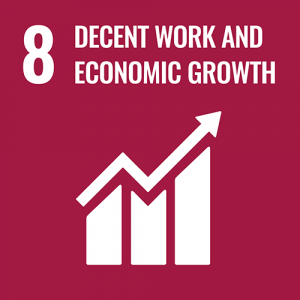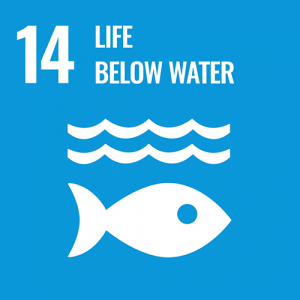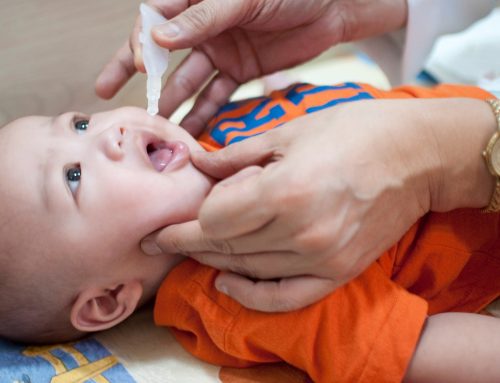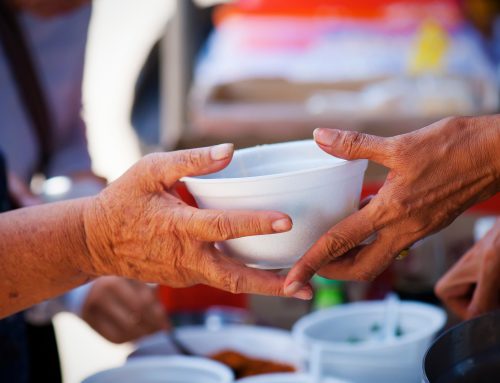Hanken School of Economics’ project Ostrobothnia Tourism Roadmap 2030 looks at how UN’s Sustainable Development Goals of the 2030 Agenda for Sustainable Development can be applied to a regional tourism strategy. The project is not yet done, but it has made good progress. We are climbing down from global goals to goals for developing tourism in the region of Ostrobothnia.
Of the Sustainable Development Goal boxes, our choices would be blue, red and mustard yellow. These are the Sustainable Development Goals that the UNWTO (World Tourism Organization) has chosen for the tourism industry. In Ostrobothnia, we monitor what is being done in Finland and abroad to promote sustainable development and adopt the best ideas.
Sustainable Development Goals are part of the UN’s 2030 Agenda for Sustainable Development. The information materials for sustainable development theme weeks are full of colourful icons that describe the 17 goals chosen by UN Member States to protect life on Earth. In 2015, UN Member States agreed on the 2030 Agenda for Sustainable Development. Sustainable development means ensuring that both current and future generations can have a good life. The abbreviation SDGs, i.e. Sustainable Development Goals, is used to refer to the Agenda’s goals.
Increasing tourism is a challenge for the planet’s health
Promoting sustainable tourism is the most important theme of tourism development in Finland. In its strategy for 2022–2025, Visit Finland’s vision is as follows: “Finland is the world’s leading sustainable travel destination. We add value to our society and customers and care for our unique environment. Finland is the first choice for mindful travellers.”
There is a desire to increase tourism in every village in Finland, but growing numbers of tourists also cause problems. In terms of export revenue, tourism is the fourth largest service industry in the world. The tourism industry provides 1 in 10 jobs in the world. In the pre-pandemic years of 2018–2019, tourism exports in Finland grew at a rate of 7%. It’s noteworthy that tourism is the one export industry where consumption happens in Finland and its value-added tax is also paid in Finland. Tourism has a positive impact on the finances of regions and tourism operators, but increasing tourism is a challenge for the planet’s health.
Flying is not healthy for the planet. Tourism is estimated to cause 8% of global greenhouse gas emissions, of which the share of transport is 75%, with flying alone causing 2–3% of global emissions. In order to make tourism more sustainable in terms of the climate, we need to make big changes in how people think and act. You can curb the carbon emissions of your own travel by applying the following principle: avoid, reduce and compensate (The Finnish Association for Fair Tourism).
Developing tourism is contradictory in Ostrobothnia as well. One has to find a balance between the pros and cons. When you look at the global figures for tourism, you understand how the activities of the tourism industry have a huge impact on the promotion of the Sustainable Development Goals.
Three main goals
The global goals set by the UN are a big task to undertake. The governments of the Member States coordinate the states’ 2030 Agenda work, and implementing the Agenda requires plenty of cooperation and contributions by various operators, from public organisations to businesses and educational institutions, as well as individuals who work to promote the goals. In the tourism industry, things can be done that affect all of the UN’s Sustainable Development Goals, but in our Ostrobothnia Tourism Roadmap 2030 project we could choose the following three main goals to act as a guideline for the development plan:



The red Goal 8, “Decent work and economic growth”, seeks to promote the creation of tourism industry jobs, particularly for women and young people. Tourism can increase employment in remote and rural areas, where there may not be many other employment opportunities. The aim is to also diversify the industry, which would lead to the creation of new job opportunities. In Ostrobothnia, the local tourism industry is quite small compared to other industries, but it is considered to have great potential, especially when it comes to rural destinations. Tourism brings benefits to the area in the form of new businesses, jobs and tourism revenue.
The mustard yellow Goal 12, “Responsible consumption and production”, aims to ensure that consumption and production in the tourism industry is in line with the principles of sustainable tourism. There are tools for monitoring the impact of tourism, which can be used to monitor the impact on waste, water consumption, energy, biodiversity or, for example, job creation.
In Finland, we are already making good progress thanks to the Sustainable Travel Finland programme launched by Visit Finland. The STF programme is a free development path for tourism businesses and destinations where the participant goes over all the dimensions of sustainable travel – the economic, the ecological and the socio-cultural – and can apply for the STF label at the end of the process. Kristiinankaupunki and Posio were the first areas in Finland to receive the Sustainable Travel Finland label.
The blue Goal 14, “Life below water”, could be a good Agenda goal for Ostrobothnia, as the sea and the archipelago are an important factor attracting tourists to the region. According to the blue Goal 14, tourism development must be part of managing coastal areas and protecting marine ecosystems. Tourism can be part of promoting the blue economy and the sustainable use of marine resources. Tourism often makes use of natural attractions, but tourism can also be used to educate and promote conservation. The Kvarken Archipelago, which is a UNESCO World Heritage Site, is located in Ostrobothnia. Development must take into account the sensitive environment of the archipelago and consider how the area could be used for tourism in a sustainable way.
The project focuses on sustainable development
Sustainable development is at the heart of the tourism strategy for Ostrobothnia. At the beginning of summer, the Ostrobothnia Tourism Roadmap 2030 project surveyed and interviewed the region’s tourism operators. The results show that the development of the tourism strategy for Ostrobothnia until 2030 focuses on sustainable development. There have been discussions on whether the term “sustainability” should even be used in the region’s tourism vision, as sustainability should already be such an integral part of operations that there is no need to advertise it separately. A few months from now, we will know more about which terms will be included in the vision.
Today, we already know that, as we build well-being in the region through tourism, we also want to promote the Sustainable Development Goals and conserve the planet for future generations. In our own strategy, we use the same year as the 2030 Agenda to check which goals we have reached.
Annika Pollari, Project Manager, the Ostrobothnia Tourism Roadmap 2030 project
The Ostrobothnia Tourism Roadmap 2030 project is led by the Department of Marketing at Hanken School of Economics in Vaasa. Hanken has received funding for the project from the ELY Centre via the European Agricultural Fund for Rural Development: Europe invests in rural areas.
Learn more about the project, which involves close cooperation with tourism businesses and operators in Ostrobothnia:
Ostrobothnia Tourism Roadmap 2030




